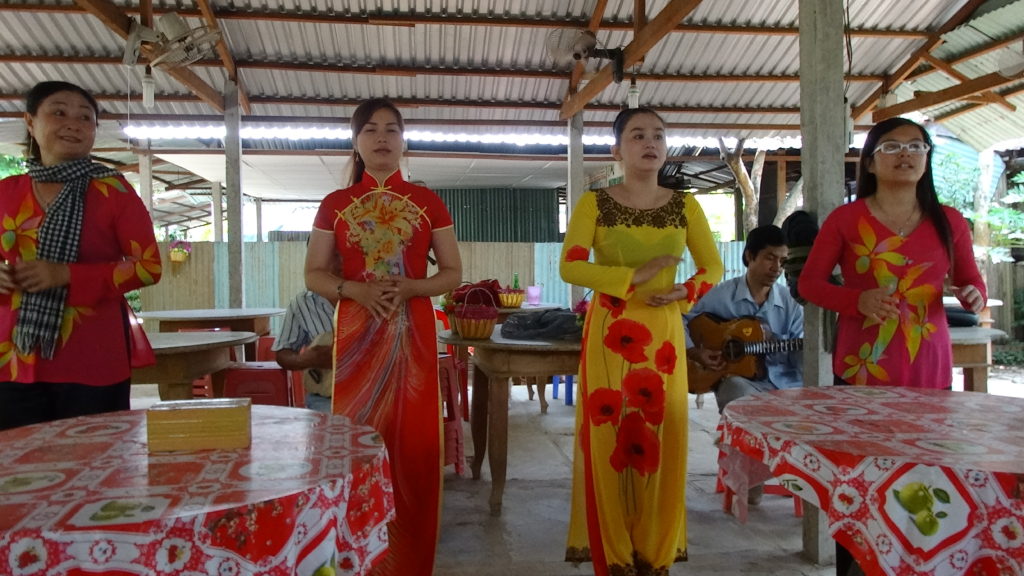A Land of Staggering Natural Beauty and Cultural Complexities
Vietnam is a country of outstanding natural beauty; some of the best beaches in South-east Asia can be found here. The larger towns and cities retain much of the colonial charm and beauty in the architecture, parks and boulevards left as a cultural legacy by the French.
A nation on the move, Vietnam balances cool urban culture with deeply rooted traditional values. In the cities, ancient pagodas sit just around the corner from sleek rooftop bars. In the countryside, life still follows the rhythms of the rice harvest, and there’s always time for a coffee on the sidewalk.
Vietnam has something for every traveler. However, it is the warmth and friendliness of the people that make travelers want to return time and time again.
Climate
Vietnam’s weather pattern is roughly split into three different zones. The north has a distinct summer and winter, with the high humidity monsoon/wet season lasting from May to October.
The center of the country experiences a long dry season, lasting from January to the end of September, before its short-wet season. The south has two distinct seasons – wet and dry, with the high humidity monsoon lasting from May to November. During the wet season in the South, it usually rains daily with a heavy but short-lived downpour in the afternoon.
The best time to visit Vietnam is from November through to March, but April, May, September and October are also popular months.
Vietnam’s Regions

Vietnam is composed of 63 provinces and five centrally-governed cities, that stand on the same administrative level as provinces; namely Hanoi, Ho Chi Minh City, Can Tho, Da Nang and Hai Phong. The General Statistics Office of Vietnam further groups these provinces and cities into eight regions, listed below:
- Southeast
- Red River Delta
- Mekong River Delta
- Northeast
- Northwest
- North Central Coast
- South Central Coast
- Central Highlands
Language
The official national language is Vietnamese. English is understood and spoken in most touristy places. Taxi and Grab drivers speak limited English, so it’s advisable to have the address of your destination written down to avoid confusion. Most street vendors speak or understand very little English or none at all.
Currency
Vietnamese Dong (VND) is the official currency; however the US Dollar is widely accepted.
The Food of Vietnam

What makes Vietnamese food great is its freshness. Each Vietnamese dish has a distinctive flavour that reflects one or more of these elements. Common ingredients include fish sauce, shrimp paste, soy sauce, rice, fresh herbs, fruit and vegetables.
The essential ingredients in the Vietnamese cooking are ginger, garlic, onion for the bitter taste, sugar for the sweet taste, vinegar or citrus for the sour taste, salt for the salty taste, and fish sauce or soy sauce for the savory taste. Vietnamese food is considered one of the healthiest cuisines worldwide.
The Traditional Clothing of Vietnam

Traditional clothing is called ao dai, pronounced ow zye in the north and ow yai in the south. ‘Ao‘ means jacket or top, and ‘dai ‘ means long. The costume consists of a flowing tunic worn over long trousers.
The ao dai originated in Vietnam in the 1744, when men and women were ordered to wear buttoned gowns over trousers. There have been modifications through the years, such as moving the buttons from the front to the side and shoulder.
Today the top of the women’s tunic is tight-fitting, and there are more variations in neckline. There are some small variations in each region, such as a four-panel tunic or the addition of a scarf.
The Music of Vietnam

Traditional Vietnamese music is highly diverse and syncretistic, combining native and foreign influences, and influences from Vietnam’s ethnic minority groups.
Throughout its history, Vietnam has been most heavily influenced by the Chinese musical tradition, as an integral part, along with Korea, Mongolia and Japan.
Moreover, an important part of Vietnamese music is improvisation, in particular an improvised introduction to a song, and ornamentation, that vary with the styles, regions, instruments and musicians. The melodies of songs, no matter their genres (folk songs, theatre, court or religious music, or others), follow the intonation of the Vietnamese language.
Adventure Hotspots

Vietnam has many off-the-beaten-track gems if you’re up for an adventure. Pu Luong, north of Hanoi, where you can trek in the forest, swim in fresh rivers, cycle through the reserve and visit beautiful small villages.
The Van Don archipelago is rarely visited by tourists, but has all the magical delights of Ha Long Bay with thousands of limestone islands and sandy beaches. Ba Be National Park, where you can wind your way through mountainous Ha Giang with an amazing view of rice terraces all the way. In Phong Nha, the ‘land of a thousand caves’, you can swim and camp inside the magnificent Tu Lan cave system.
Related Posts

